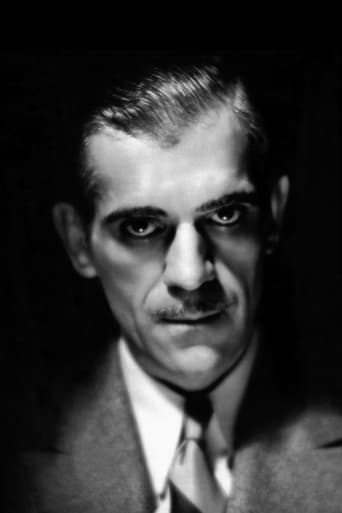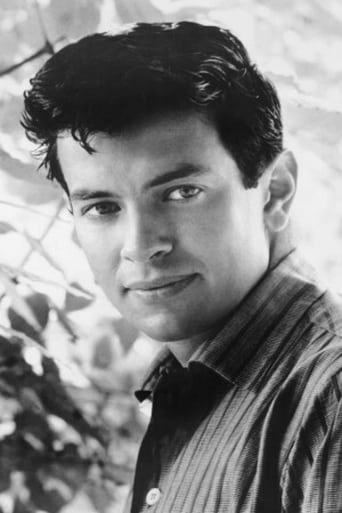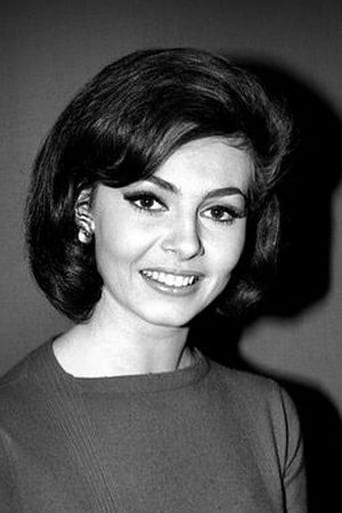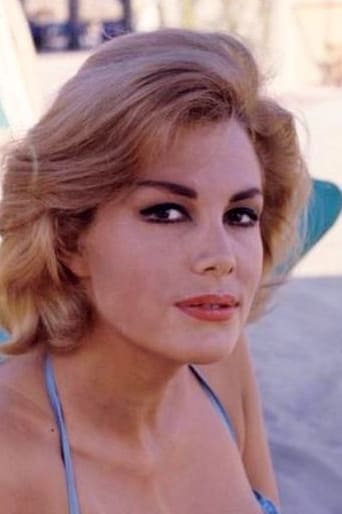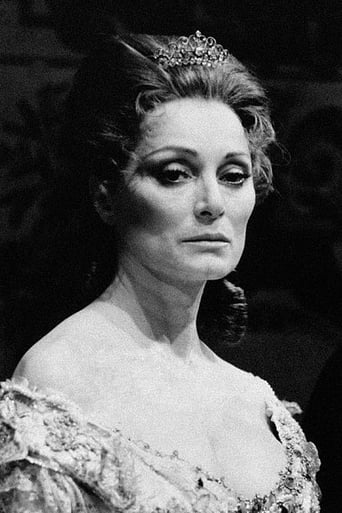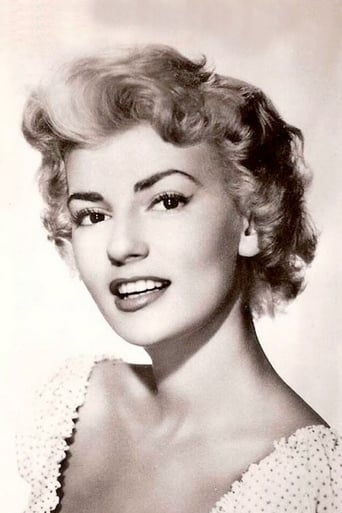BelSports
This is a coming of age storyline that you've seen in one form or another for decades. It takes a truly unique voice to make yet another one worth watching.
Kien Navarro
Exactly the movie you think it is, but not the movie you want it to be.
Kaydan Christian
A terrific literary drama and character piece that shows how the process of creating art can be seen differently by those doing it and those looking at it from the outside.
Kayden
This is a dark and sometimes deeply uncomfortable drama
mark.waltz
There were dozens of multi part horror films made from the 1950's through the 1970's, and this Italian entry in that genre is a cult classic, but a mixed bag. It's narrated by Boris Karloff who is the star of one of the three parts, his being the longest segment in the Italian language version I saw while writing up this review. I saw the dubbed English version years ago on commercial VHS, and mainly remembered the Karloff sequence that focused on a family cursed with vampires who attack those they loved in life, making me wonder how a vampire continues to survive once they run out of loved ones. Karloff, narrating the film as himself, looks haggard and ancient as the family patriarch, off in war in the middle ages setting, coming back to allegedly get his entire family to join him as one of the undead. The horror involves his young grandson, kidnapped by him for a furious ride along the paths of the seemingly dead countryside, as well as the adding up of never ending victims. It's slow moving, but very spooky.A modern sequence involves a young woman being harassed by telephone presumably by a former lover she betrayed to the police, and the twists involving an estranged friend she asks for help. This is a suspenseful but ridiculously plotted segment, because why didn't she just get out, go to the police, check into a hotel and stay out of the danger zone? There are some interesting aspects of it, but it's trite and extremely obvious. The other segment is comical, an ugly looking mannequin made out to be a corpse, from which a nurse steals a supposedly valuable ring, much to her own detriment. The corpse comes to life somehow, floating around in a search for revenge. I didn't laugh so much as roll my eyes, especially since the corpse looked like how Bette Davis made herself up as the title character in "Whatever Happened to Baby Jane?" To end it all, at least in the Italian version, is a silly return of Karloff in his vampire disguise, bidding the audience adieu.
classicsoncall
Thanks to this movie I've been able to add the term 'wurdulak' to my vampire lore. Or maybe not. The Wurdulak segment of this movie offers two different interpretations; Boris Karloff's explanation states that it's a vampire that lives on the blood of those they love. In the story itself, it's described as a living corpse that needs blood to survive. And even with that, there are hints of a werewolf connection, and when an already dead boy entreats his mother to open the door of their remote cabin, it's Karloff's character Gorca who's standing there. So there's a shape-shifting element at work as well. So I guess it can be whatever fits your mood, you make the call.The version of the film I caught on Turner Classics had 'The Drop of Water' as it's first segment. A lot of the story dealt with the fear one's own imagination can create when it's running on overdrive. A dripping faucet and bumps in the night made for an effective story that was climaxed by one of the creepiest dead or alive faces you're apt to ever catch on screen, reminiscent of a 'Tales From the Crypt' type horror. The horsefly was a creepy bonus.'The Telephone' rather intrigued me for it's rather garish physical appearance - a bright red body with a black receiver. I wonder if you could have gotten a phone like that back in the day of the dial. All rather moot today, but interesting nonetheless. This story might have borrowed it's concept from an earlier Twilight Zone episode titled "Long Distance Call'. Another TZ story followed this film chronologically with the title 'Night Call', both using telephones to reach out to the great beyond.The Wurdulak episode appeared last in this trilogy with a somewhat expected twist at the end for fans of this kind of stuff. I had to chuckle a bit when Karloff's character picked up the boy portraying his grandson, the kid actually looked scared of him and I don't think he was acting. It reminded me of actress Mae Clark who appeared with Karloff in the original 1931 "Frankenstein". She was so frightened by his appearance that they worked out a little gimmick between them whereby Karloff wiggled his pinkie finger when they were filming together to let her know he was thinking of her.Fans of modern day horror flicks might not get their fill of scares with this picture but for it's era it works pretty well. There appears to be some Hammer Horror inspiration with the first two segments regarding the bright, vivid colors and detailed appointments used in the sets. Karloff fans ought to be satisfied with his role in the final chapter, looking positively creepy while right in his element. Even the horse Vladimir (Mark Damon) rode in on knew enough to get the heck out of there.
utgard14
Excellent horror anthology film from Mario Bava with three stories as well as linking segments with Boris Karloff. The first story is "The Drop of Water," about a nurse who steals a ring off the finger of a medium's corpse. If you guessed that won't end well for her, you're right. This is a suspenseful story with fine atmosphere. That corpse is one of the creepiest-looking things I've ever seen on film. The next story, "The Telephone," is about a woman receiving mysterious taunting phone calls. A nice-looking segment, and Michele Mercier is definitely attractive, but this is the weakest of all the stories. That isn't to say it's bad, though. It's interesting enough just not as good as the other two. The final, and best, story is "The Wurdulak," about a family awaiting the return of their father (Boris Karloff) who went out to kill a vampire. When the father returns, he's very different. Karloff is lots of fun in this story as well as the linking segments.This review is mainly for the dubbed American version. The original Italian version differs from the American with the order of the stories changed as well as some violent and suggestive content that was cut for American release. I give both versions the same score because, to me, the differences aren't enough to make one better than the other. "The Telephone" has the most significant changes but remains the weakest story in both versions. The Italian version has a score by Roberto Nicolosi and the American score is by Les Baxter. I preferred the Baxter score personally but I can see where others would prefer Nicolosi's more subtle score. I recommend you try both versions if you have the time. It's a colorful and beautiful-looking film that ranks high on the list of horror anthology movies I've seen. Karloff and Bava fans will love it.
Dr_Drew_Says
Black Sabbath (1963) - The Good, the Bad and the Cinematic BeautySynopsis: A trio of Italian cinema giallo/horror shorts: "Il Telefono" - the story of a woman driven to madness by disturbing phone calls, "I Wurdelak" - a period piece of a family driven to destruction by a vampire-like being, "La Goccia d' Acqua" - translated as a "A Drop of Water", it centers around a nurse who steals a ring from a corpse who comes back for revenge.The Good: A beautifully crafted set of films that each show unique qualities, yet somehow feel cohesive. All three shorts are set in different time periods, yet the atmosphere of the film in its entirety feels familiar and establishes continuity, so you never feel like you're starting a brand new movie. It's a quality that is rare, so I am endeared to few anthology-type movies, but this one succeeds. As for each of the shorts independently, for me, "La Goccia d' Acqua" was by far the best and most effective. Few movies created in the 1960's hold any sort of true scariness to them in present day, but this segment does just that. It's a very creepy piece and can challenge most modern horror in its ability to raise the hair on your arms. It's something about the look of the corpse and how the suspense of the scene builds to a fever pitch and ultimate reveal. While I enjoyed the other two segments as well, this segment really made the movie for me. It finished the film on a high note and made me momentarily forget a few of the things that were lacking in the first hour of the film.The Bad: While the entire film is good, I felt that the first two segments didn't quite hold up as well over time. "Il Telefono" is a very straight up giallo, which I felt that Bava perfected over time, but is somewhat lacking in it's bite here. The piece is relatively tame and the ending was predictable. I found it rather boring in spots as well. "I Wurdelak" is a step in the right direction for the film, but it drags on a tad too long (which is not something you should feel with short films). Karloff is good in the part of Gorca, but otherwise, the acting is period-piece over-the-top. This is fine if the story is grand in scale, but with roughly a half hour of screen time, there simply wasn't enough material for the "Gone with the Wind" dramatic acting. The tale is essentially a love story, but with so much happening so fast, it loses its believability and that takes you out of the story. I feel like these are minor gripes in the grand scheme, though. The Cinematic Beauty: The film in its entirety is gorgeous. For what the "I Wurdelak" story lacks in depth, it makes up for in its beautiful set pieces. The Old World ruins and the chilling brutality of the winter landscape embraces the viewer. Each segment has excellent use of lighting and color, specifically "La Goccia d' Acqua". A simple strobing green light outside a window gives this segment ten times the atmosphere and sets up a very suspenseful ending. In addition to the light, the dripping water effect is palpable, heightening your senses and creating massive tension in a very simplistic way. Bava always had this sort of attention to detail and it is what makes his films so easy to watch. Sometimes it is hard to pinpoint exactly why you like to watch a movie. On the surface, the individual segments of Black Sabbath are not ground-breaking in concept at all (aside from the last possibly). The vampire concept, even in 1963, has been done hundreds of times. The difference is Bava's superior attention to detail and the creation of an atmosphere within each of the films to draw the viewer in. In doing that, you create a movie that is successful in its execution.



